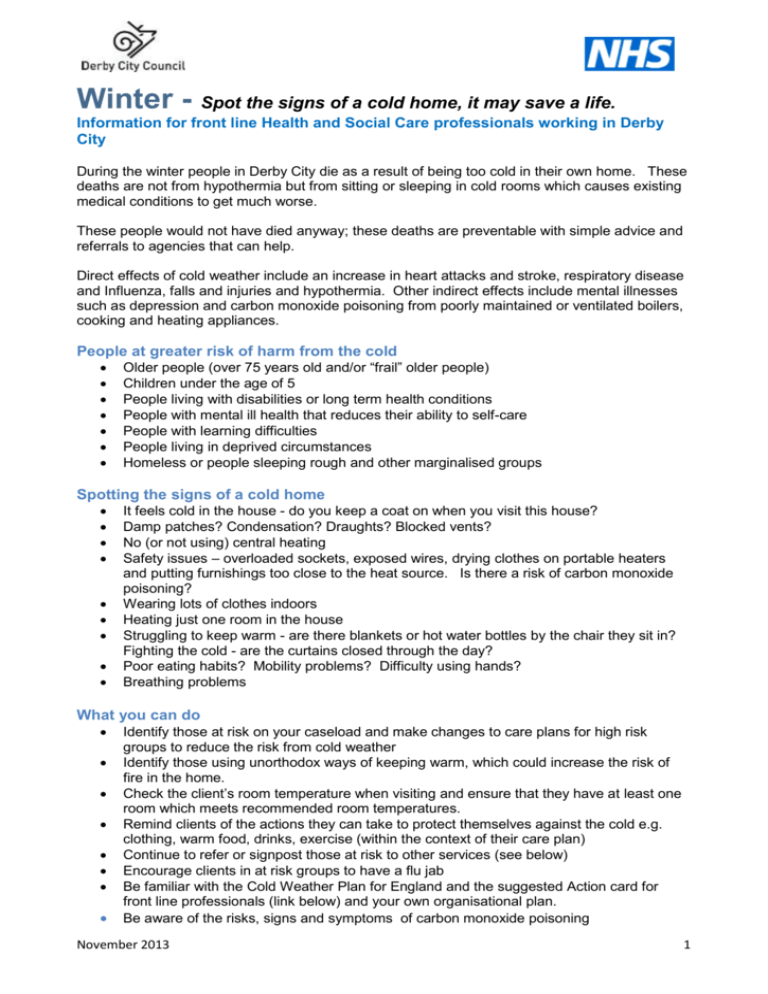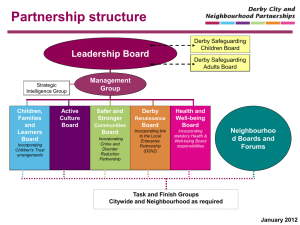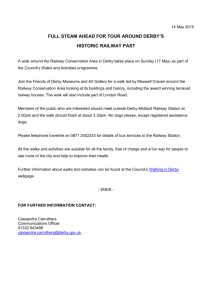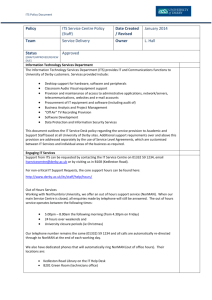Winter - Healthwatch Derby
advertisement

Winter - Spot the signs of a cold home, it may save a life. Information for front line Health and Social Care professionals working in Derby City During the winter people in Derby City die as a result of being too cold in their own home. These deaths are not from hypothermia but from sitting or sleeping in cold rooms which causes existing medical conditions to get much worse. These people would not have died anyway; these deaths are preventable with simple advice and referrals to agencies that can help. Direct effects of cold weather include an increase in heart attacks and stroke, respiratory disease and Influenza, falls and injuries and hypothermia. Other indirect effects include mental illnesses such as depression and carbon monoxide poisoning from poorly maintained or ventilated boilers, cooking and heating appliances. People at greater risk of harm from the cold Older people (over 75 years old and/or “frail” older people) Children under the age of 5 People living with disabilities or long term health conditions People with mental ill health that reduces their ability to self-care People with learning difficulties People living in deprived circumstances Homeless or people sleeping rough and other marginalised groups Spotting the signs of a cold home It feels cold in the house - do you keep a coat on when you visit this house? Damp patches? Condensation? Draughts? Blocked vents? No (or not using) central heating Safety issues – overloaded sockets, exposed wires, drying clothes on portable heaters and putting furnishings too close to the heat source. Is there a risk of carbon monoxide poisoning? Wearing lots of clothes indoors Heating just one room in the house Struggling to keep warm - are there blankets or hot water bottles by the chair they sit in? Fighting the cold - are the curtains closed through the day? Poor eating habits? Mobility problems? Difficulty using hands? Breathing problems What you can do factsheets Identify those at risk on your caseload and make changes to care plans for high risk groups to reduce the risk from cold weather Identify those using unorthodox ways of keeping warm, which could increase the risk of fire in the home. Check the client’s room temperature when visiting and ensure that they have at least one room which meets recommended room temperatures. Remind clients of the actions they can take to protect themselves against the cold e.g. clothing, warm food, drinks, exercise (within the context of their care plan) Continue to refer or signpost those at risk to other services (see below) Encourage clients in at risk groups to have a flu jab Be familiar with the Cold Weather Plan for England and the suggested Action card for front line professionals (link below) and your own organisational plan. Be aware of the risks, signs and symptoms of carbon monoxide poisoning November 2013 1 Give Key Health Messages Get your flu jab if you are in an at risk group Keep your house warm, efficiently and safely – your living room should be 21°C (70°F) and your bedroom heated to 18°C (65°F) Keep in the warmth (draughts, insulation, draw the curtains etc.) Look after yourself- eating hot meals, hot drinks, wearing lots of thin layers, stock up on food and medication in bad weather Heating and cooking appliances should be properly maintained – don’t use the oven or gas cooker to heat your home – you risk carbon monoxide poisoning. Always use a fire guard to protect an open fire against flying sparks. Look after others – older relatives, friends and neighbours Get financial support – you may be eligible for grants, benefits and sources of advice to make your home more energy efficient or help to pay the bills Who can help those in your care? Stay Warm and Healthy in Derby 01332 640337 (winter programme line) – a wider partnership project led by Derby City Council that helps local vulnerable people who are struggling to keep warm and heat their homes by offering advice, practical support and/or assistance in improving or repairing home heating systems. Derby City Council Healthy Housing Service (all year around) receives referrals from any health and care workers for people whose housing conditions may be harming their health; offers advice, practical support and/or assistance in adapting or repairing the home. Telephone: 01332 640163 Email – healthyhousing@derby.gov.uk Web - http://www.derby.gov.uk/health-and-social-care/health-medical-advice/healthy-housingservice/#page-contact-details Derby City Council Home Energy Advice Service gives information and advice about how to save energy, keep warm, and latest advice on the latest home energy grants and discount schemes. Telephone: 01332 640810 e-mail: energy.adviceteam@derby.gov.uk Web: www.derby.gov.uk/homeenergyadvice Age UK (Derby and Derbyshire) provide a range of services for the older community across Derby and Derbyshire. Telephone: 01332 343232 Email: derbyadmin@ageukderby.org.uk http://www.ageuk.org.uk/derbyandderbyshire/ Derbyshire Fire and Rescue Service offer home safety checks where it is known that there is a higher risk of fire, primarily the more vulnerable groups in the community http://www.derbysfire.gov.uk/keeping-safe/home-fire-safety-check Information ‘Keep Warm Keep Well’ leaflet https://www.gov.uk/government/publications/keep-warm-keepwell-leaflet-gives-advice-on-staying-healthy-in-cold-weather Age UK “Winter Wrapped Up” http://www.ageuk.org.uk/health-wellbeing/keeping-your-bodyhealthy/winter-wrapped-up/ Met Office “Get ready for Winter” http://www.metoffice.gov.uk/learning/get-ready-for-winter Cold Weather Plan for England 2013 and Action Cards for cold weather alert service for: Individuals, Community and Voluntary Sector, Frontline staff, provider organisations and commissioners https://www.gov.uk/government/publications/cold-weather-plan-for-england-2013 ‘Stay Warm + Healthy in Derby’ leaflet http://www.derby.gov.uk/media/intranet/documents/transformation/adultshealthandhousing/housin g/Stay%20warm%20and%20healthy%20flier%20Oct%202013.pdf Derbyshire Fire and Rescue Service ‘Cold Weather at Home’ Safety advice to prevent fires, deaths and injuries and preparing for cold weather at home can be found at http://www.derbysfire.gov.uk/keeping-safe/cold-weather-at-home November 2013 2





